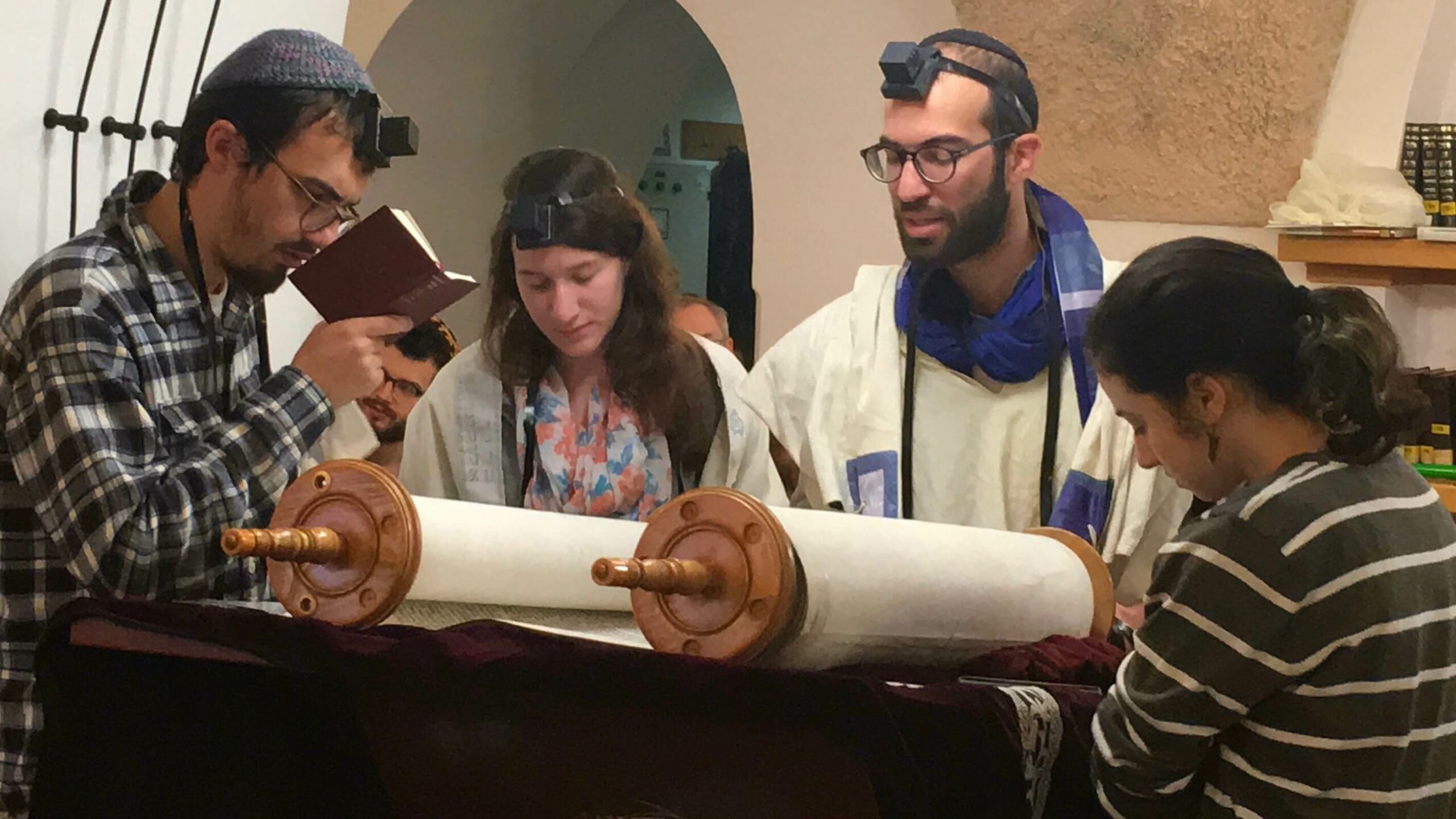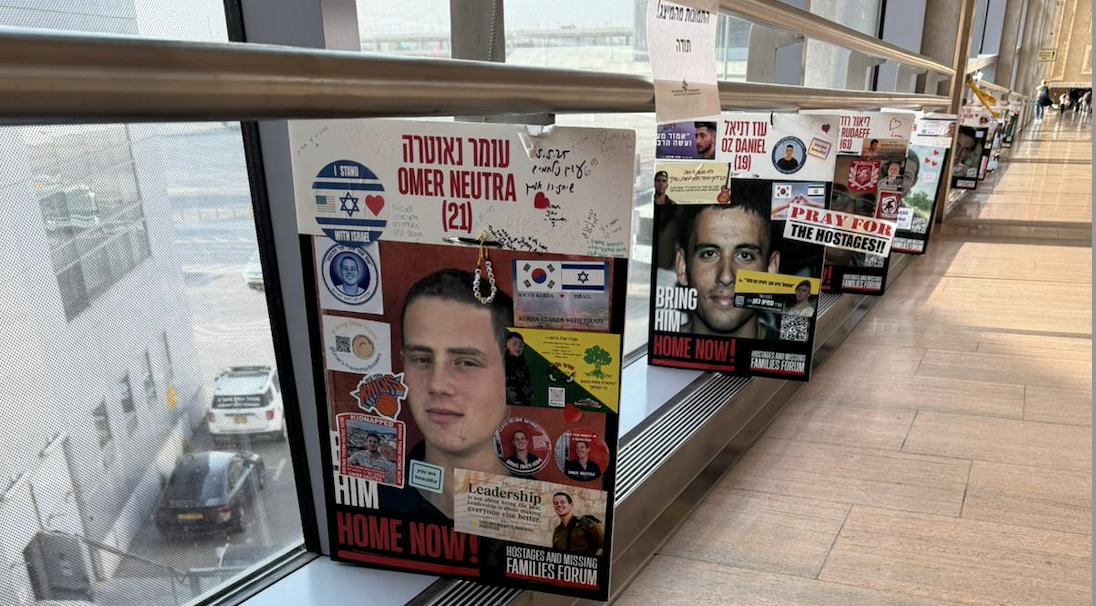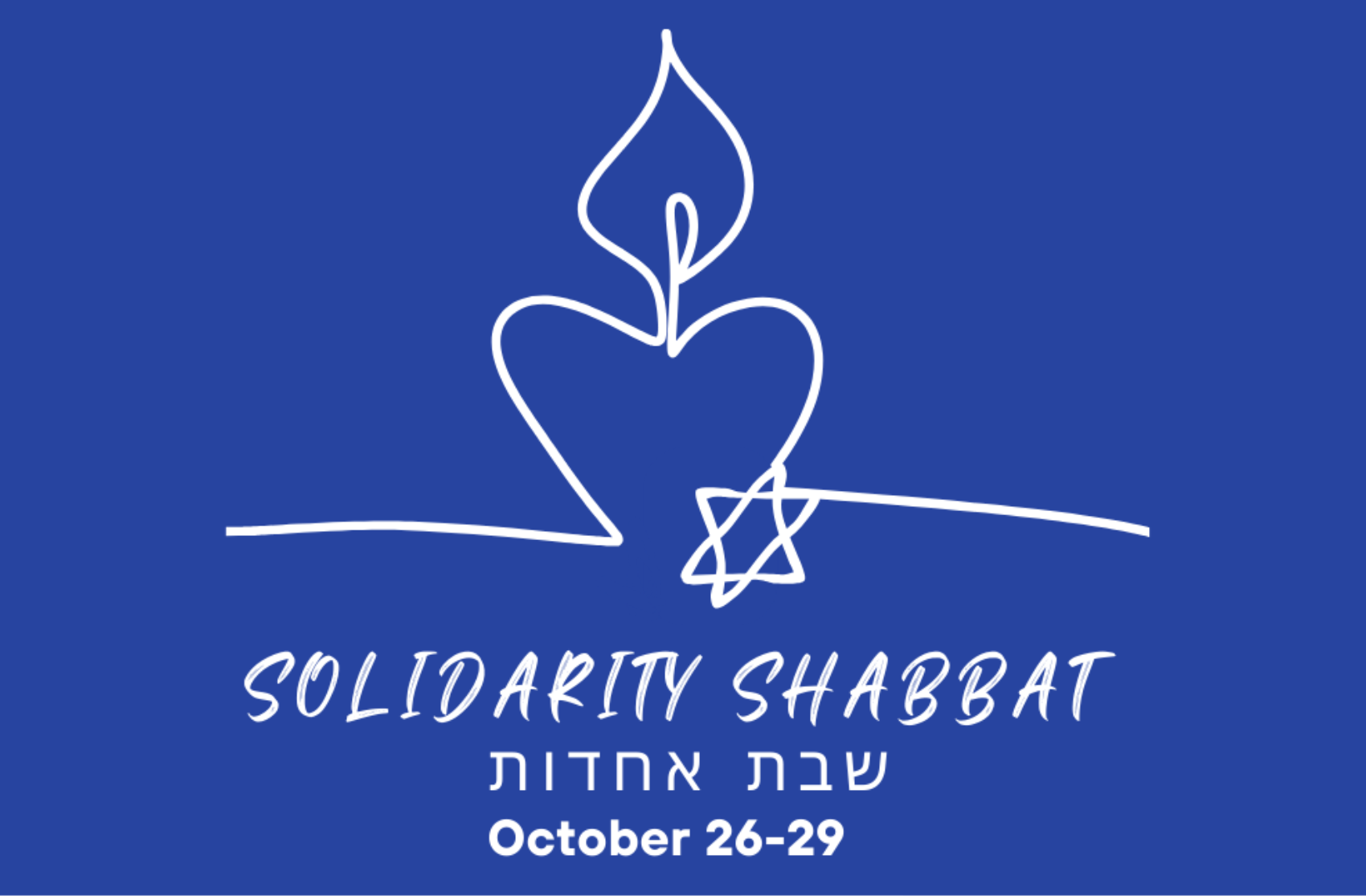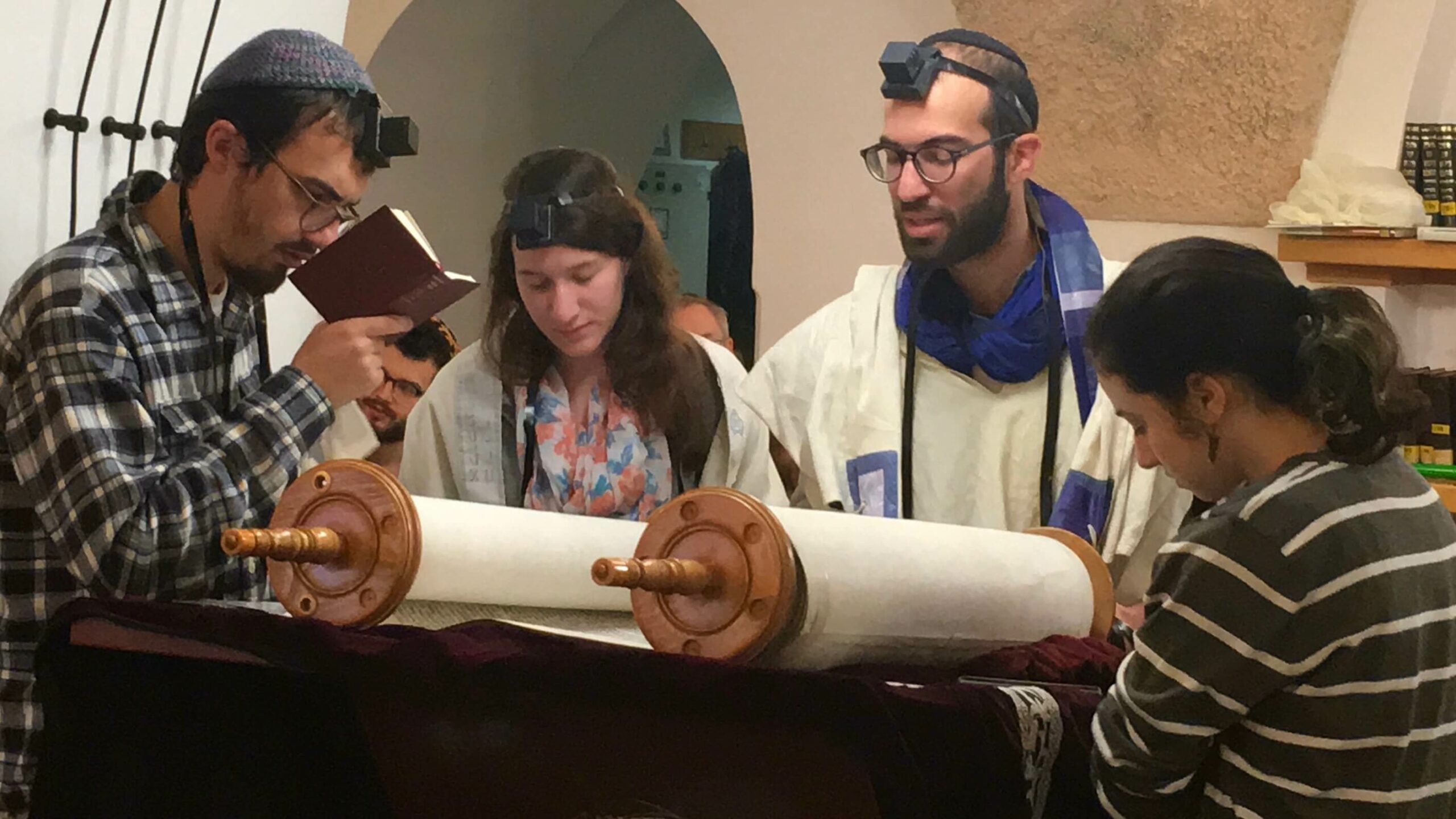

TORAH SPARKS (print friendly version)
Yom Kippur 5779| Part 2 September 19, 2018 | 10 Tishrei 5779
The following is drawn from learning done during the Conservative Yeshiva’s 4-day Pre-Yom Kippur minimester.
“Ki L’chol HaAm B’shgaga”
Rabbi Shoshana Cohen, Conservative Yeshiva Faculty
Kol Nidre ends with a series of lines that uniquely encapsulates the meaning of Yom Kippur. The last line, repeated by the congregation three times, is particularly powerful. Before we have even started Maariv, the first of Yom Kippur’s 5 prayer services, we quote quite confidently the verse from Bamidbar 14:20:
| ויאמר ה סלחתי כדבריך. | God said, I have forgiven as you asked. |
The original context of the verse is after the spies have returned and encouraged the Children of Israel not to go into the Land of Israel. Moshe has pleaded for God to forgive the people and God is confirming that his request has been answered. So at the start of Yom Kippur, before we have barely begun to ask for forgiveness, we are already putting these words of forgiveness in God’s mouth. Indeed much of our posture with regard to Yom Kippur is just this: God will forgive us; that’s what God does.
What then does this day do and why does it (automatically, it seems) atone? Immediately preceding this declaration, we say a line together, which, to my mind, is just as powerful as the concluding line, but perhaps not for the reasons we may have thought. We say this line from Bamidbar 15:26:
| וְנִסְלַח, לְכָל-עֲדַת בְּנֵי יִשְׂרָאֵל, וְלַגֵּר, הַגָּר בְּתוֹכָם: כִּי לְכָל-הָעָם, בִּשְׁגָגָה. | And it shall be forgiven all the congregation of the Children of Israel and the stranger who sojourneth among them, seeing all the people were in ignorance. |
This verse is also not really talking about Yom Kippur. Rather it outlines a general system, quite foreign from our own, in which those who unintentionally transgress one of God’s laws, no matter who they are or what they have done, can offer a sacrifice, by which they atone for their sins and are forgiven by God. This is the theme picked up by the Mishnah in the 8th chapter of Yoma when it says “it is the day that atones.” That is, the day itself has the power to wash away sins.
In the universe of the sacrificial system outlined in Vayikra and Bamidbar, this is not surprising. One of the important features of this system is its ability to deal with evil by removing it. The detailed account of the scapegoat, the sacrificial system, can be summed up in three words: ובערת הרע מקבך – you shall banish the evil from your midst. This idea of evil, outlined beautifully by Israel Knohl in his book, The Divine Symphony, is one that deals with evil by keeping it away from God. Evil’s existence is acknowledged, but it is not inherent, not to God, and not to humanity either.
The process of Yom Kippur – whether the day, the sacrifices, the prayers, or even the confession – is not to hold on to evil, to our sins, but rather to express them, to take them out for the purpose of letting them go. As Rut Yair-Nussbaum has said in the name of several Hassidic Rebbes, we are not supposed to use this day to wallow in our faults, as so many of us do and have been taught to do; rather, we verbalize them in order to remove them from ourselves. We must acknowledge that we are not our faults. They can be removed from us, and we will be cleansed.
There is an important statement attributed to R. Yisrael Salanter: כל עוד האור דלוק עדיין אפשר לתקן – As long as the candle burns, it is still possible to fix. In many circles, this line is repeated over and over again as the days of repentance approach. Though it originates in the Lithuanian “Musar Movement,” this attitude towards repentance is easily adopted by contemporary liberal Jews. We embrace idea that fixing the world and ourselves is always possible, and are troubled with the idea that God closes the gates at Neilah with finality. The notion that there is a statute of limitations on teshuva is painful. If there is a time limit to our ability to fix things, then the very ability to repair and improve seems less powerful.
But is it true that we can always change? That we can always fix? Is perpetual opportunity for improvement the most beneficial way of conceptualizing teshuva? I believe that this attitude misses a significant percentage of the “evils” in our lives, the very evils from which we must distance ourselves. While we can and should try to fix what we can, what do we do about wrongs that seem irreparable? We need language with which we can acknowledge brokenness, even of our own doing – that which cannot be fixed, no matter what we do.
The prescription of ‘as long as the candle burns” essentially says, “try, try again.” While this may be the crux of what happens during the Days of Repentance, it is not, I believe, the nature of Yom Kippur. By the time Yom Kippur arrives, we have done all we can to repair and improve, and now we come to the unfixables, with the hope of releasing them and detaching them from ourselves. The hardest part is knowing what we can fix and what we can’t – what we should continue to engage with, and what just needs to be burned on the altar or sent to Azazel.
Knowing the difference between these elements in our lives is articulated in Reinhold Niebuhr’s “Serenity Prayer,” made famous by Alcoholics Anonymous:
God, give me grace to accept with serenity, the things that cannot be changed, courage to change the things which should be changed, and the Wisdom to distinguish the one from the other.
The Talmud in Makkot (ch. 2) gives us a powerful and deeper alternative to the same theme. The mishnah in this chapter interprets the biblical verses about an unintentional killer. According to the Bible, one who kills unintentionally can flee to an Ir Miklat (City of Refuge). In the biblical context, this exile is not a punishment for the killer, but a protective measure. This killer is subject to the wrath of his victim’s family, and the blood guilt is permitted to be cleansed by a family member. By running to the Ir Miklat, the unintentional killer is protected from the victim’s family members and may not be killed.
The Rabbis call this killer a shogeg. While this word is not actually used in the biblical passages about the Cities of Refuge, it comes from our Bamidbar verse above, “anyone who sinned unintentionally.” That the Rabbis apply a term from a context of ritual transgression to that of a capital crime is interesting. For the most part, the Rabbis, in contrast to the biblical approach, see this flight not only as a protection, but also as a punishment – banishment. They also take some time to examine the situation of the shogeg, the unintentional killer. It seems that all agree that, everything else being equal, a shogeg is exiled because of the fuzzy status of his act. On the one hand, he did something wrong, and that evil must be acknowledged and dealt with; on the other hand, his act was unintentional, rendering the “normal” punishment of death unjust.
The discussion in the Talmud (Makkot 7b) explores the psychology of the unintentional killer, and with good reason. Something terrible has happened in the world: a person has been killed. The connection between this act and the intent of the person who caused it is unclear, however, and therefore the nature of the appropriate punishment is also unclear. The Rabbis debate: according to Abaye, an unintentional killer can be truly anoos (“forced” – having no intention whatsoever), whereas Rava stresses the fact that an unintentional killer may be karov l’meizid (having some intention that is in line with the result).
There is no winner of this debate. Instead, we have a powerful unpacking of the nature of unintentional crime. A person may not intend to kill, but when one does so in a manner consistent enough with the outcome, we condemn this person, as if he had killed with intent (meizid). And when one kills not only with no intent, but with no way of knowing that the actions taken would have such tragic outcome, that person is released, with the status of anoos. These different scenarios are all over the legal system today. And this is the nature of shogeg. On the one hand, something bad has happened; on the other, we are not sure what degree of responsibility the perpetrator has for this evil.
On Yom Kippur, we all stand and say kol ha’am b’shgaga – we are all in the position of shogeg. Before learning this sugia in Makkot, I read this line, as I believe most of us do, as an appeal to God to give us a light sentence. While we are often, sadly, intentional sinners and therefore deserving of the ultimate punishment, we ask God to act as if we had sinned unintentionally and therefore give us either a light sentence or none at all. According to this read, we are asking God to willfully defy God’s own justice, as it were.
Now, I suggest instead that the work of teshuva is to put ourselves on the scale between Abaye and Rava, to look at all of the times in our lives where there was a disconnect between what we intended to do and what we did, especially when the outcome was negative. We hurt people, we yell and use course language, we do things that are not good, and they need to be recognized as wrong. But the powerful process here is one of sorting. In which of these “evil” situations were we karov l’meizid and in which of them were we anoos? When are we required to go into exile?
In the situations where we were karov l’meizid, where our general intent lined up with the outcome, we need atonement. We need to acknowledge what we have done and do all we can to receive forgiveness from the ones we have wronged. And in situations where we were anoos, we need to acknowledge that our hands were tied, that there really was nothing we could have done to avoid the negative outcome. We need to be able to release ourselves from responsibility and guilt.
There is still another place on this scale of responsibility. If in the first case we take full responsibility and make sure that the situation is fixed, and in the second case we release ourselves from responsibility and guilt, the third case is a middle ground: exile. At first glance the biblical/rabbinic exile looks a lot like prison. Someone committed a crime, whether they fully intended to or not, and they must be removed from society. We can imagine the killer being sent to the Ir Miklat, separated from family and friends, entering a place undoubtedly full of other killers like himself. However, this is not at all how the Talmud describes the city. It stresses the fact that these cities must be populated with “regular” people, that it have access to water, food, even employment. In this most radical statement, R. claims that if a student is exiled, his rabbi can [or must] go with him and even further, if a rabbi is exiled, his whole yeshiva can [or must] go with him! This is anything but a prison in the modern sense. It is a rehabilitation system. The crime is acknowledged. It sends the killer into exile, but once there, the punishment is over. The criminal is not the crime. The crime or sin is released, and the person is free to begin the process of rehabilitation. This can happen, according to the Talmud, only if the killer is provided with basic freedoms and more. Indeed, the relationships with teachers, family, students are what allows the person to separate from the act they have committed and become “normal” again.
So when we stand before God on Yom Kippur and say “ki l’chol ha’am b’shgaga,” we are saying that we have done this work and would like to move on. We take full responsibility for the things that we can fix and have done our best to fix them. And we are not releasing ourselves from responsibility for the things we cannot change. Instead, we are asking for help from God and from our community to move past the things we are still holding on to so that the we can rebuild.
May we all be blessed to experience the atoning and healing power of Yom Kippur. G’mar chatima tova.







